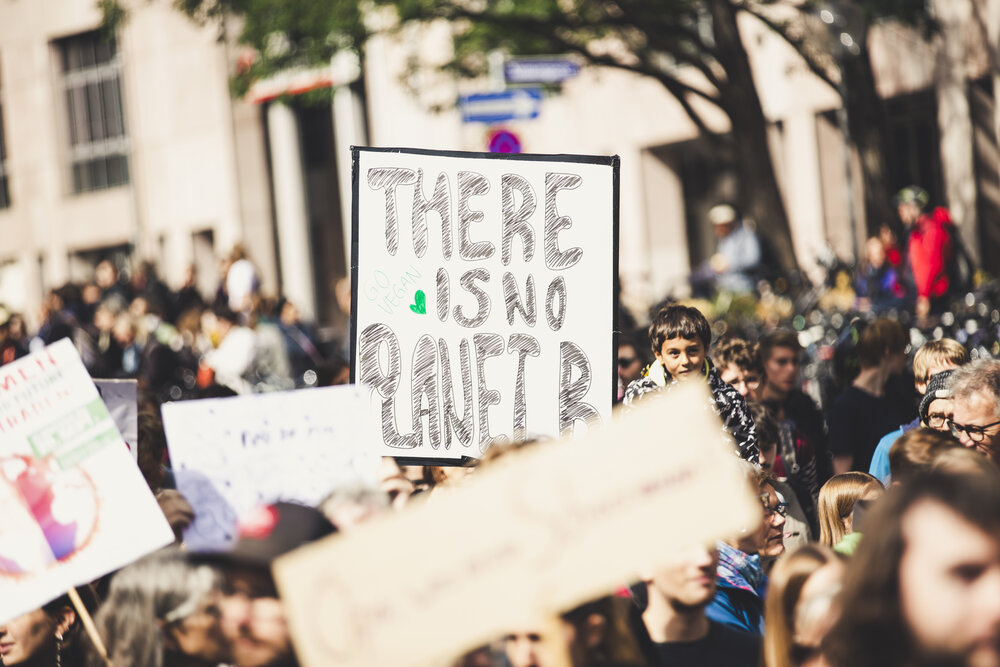gomi power bank review | UK made sustainable charger
Posted by Kenny Irvine onThe gomi power bank is super sustainable charger that gets the job done but lacks any extra features to make it more convenient to use. Overall I rate it 7.3 out of 10. Read full review below. PORTABILITY 8.0 / 10.00CHARGING CAPABILITY7.0 / 10.00 SUSTAINABILITY & REPAIRABILITY9.0 / 10.00 RECHARGE TIME7.5...
How to start a Zero Waste / Refill store in the USA 🇺🇸
Posted by Rishi Gupta onThinking about setting up a zero-waste store? Then read this first. If you’re thinking of starting a zero-waste store knowing where to start can feel pretty daunting. With lots to consider you might be wondering what you should give your attention to first. But never fear, we’re going to share...
Tips for Zero Waste shops reopening after Covid-19 ease
Posted by Pawan Saunya onZero waste and bulk stores are not exactly Covid-19 friendly, as they most often operate on a self service basis and encourage reusing containers and bottles, as well as being in close contact with products and food items.
Here are a few things you can put in place in preparation to reopen:
Social distancing
Keep entrance door open so no one has to touch it, similarly with door to back room or any frequently touched areas
2 meters distance between any person in store and in the queue
A limit of 2/3/4 customers in at once depending on the size of your shop, one in one out rule is useful here so customer in line know when to come in without a staff member monitoring
Advise customers to come shop alone if possible and make a list prior so that those in line do not wait too long
Markings inside and outside the store to keep customer aware of social distancing rules
A limited number of staff members on the shop floor, till, or back room so as not to overcrowd a space
Placing the customer’s shopping away from you when packing and paying so that they can grab their items without being too close
Card/ contactless payment preferred
Personal Protective Equipment
Have easy access to hand sanitiser, disposable gloves, and/ or masks when entering and working in the store
Hand sanitiser and anti bacterial spray can be bought in bulk and refilled for use in store
Single use disposable gloves can be biodegradable/ recyclable if made of nitrile, natural latex, or vinyl
Masks can be made of cotton or similar materials that can be washed after each use instead of singles use disposable masks
Ensuring aprons, towels, or cloths are cleaned daily
Sanitisation
More regular and robust cleaning checklist and sanitisation protocol may be required for staff to go through daily, especially on frequent touch points such as card machines, door handles, scoops, utensils, baskets, liquid taps, and food containers, lids, or jars
Customers may not be allowed for some time to bring their own containers to refill, unless they have been sterilised beforehand or are only touched by the customer
Products may have to be pre-packaged into paper bags of varying quantities for customers to grab and go, preventing them from touching surfaces, food, or utensils and staying in store for too long
Staff members
Checking for best before dates and discounting items that are nearing their out of dates
Opening hours may have to be reduced, as staff members that are high risk may not be able to come into work and as more time is needed to clean and sanitise at the beginning and end of each day
Minimum spend of £10 so daily sales targets are achieved despite limited opening hours and decrease in customers
Supply chain
Suppliers negatively affected by Covid-19 and the consequences of lockdown may have limits on their supply
many items may not be available or take longer to be delivered in store, which affects stocks and waiting time for certain items, communicate this to customers so they are not disappointed if what they are looking for is unavailable
In particular staple items such as flour, baking yeast, oats, rice, pasta etc can be harder to procure, offer alternatives such as spelt flour, lentil pasta, barley flakes, baking soda etc.
Click and collect + Deliveries
Introducing a click and collect service allows customers to shop and pay online, and pick up in store without having to come in or touch anything
Deliveries within a few km radius helps those that may not be able to come to the store for pick up - this will be more work for staff but does ensure the safety of customers and limits the flow of people in store
A click&collect and delivery service may be a way for the shop to reopen for business without having customers in at all

Salomé Savary
writes blog posts on all things zero waste, from cooking tips to travelling hacks. She is passionate about encouraging others to adopt low waste habits in any and every aspect of their lives.
Mother's Day 2020: sustainable gifts ideas
Posted by Pawan Saunya onMother’s Day is the day that you can show how much you love her (grand)mother. Do you want to stay away from all the cliché gifts? And be more original? Go green this year. Sustainable gifts for Mother's Day, with which you not only pamper your mother, but also Mother Nature and the climate.
‘Stay home, stay safe', has been the advice for weeks. Luckily, there’s online shopping! If you open the worldwide web, you’ll discover many beautiful, sustainable gifts for Mother's Day. And what stands out? The range of gifts with a green touch grows with the year. Certainly, in this bizarre quarantine time in which we’re confronted with a large sum of (temporary) sacrifices, we will be examining our lives including lifestyle. And that's great! Who knows, maybe your mother is at the beginning of her zero-waste journey, has she already taken the first steps in the green direction? Either way here are three tips on how to turn Mother's Day green:
Sustainability Boxes are a great choice, such as ones from ZustainaBox. Boxes splashed with love, and which are filled to the brim with sustainable products. Green must-haves that show that sustainable living isn’t much hustle at all. All box products are vegan, plastic-free, have a low impact and are made by local entrepreneurs. No chemical mess, just pure nature! How about Mom's Personal Care Box full of lovely care products? The Mom's High Tea Box for the cozy tea lover? Or the Ma-de-Liefste Box for moms with green fingers? Look no further for a special and sustainable gift for Mother's Day.
Another Mother’s Day gift that not only makes your mom, but also local do-gooders happy, is a culinary gift card. A smart idea that many restaurants have embraced. Okay, it’s a pity that you can’t have fun with your mom on Mother’s Day, but hey, she can look forward to the finger lickin’ good food date! Check which restaurants have created a culinary voucher. Do you want to go for the most sustainable option? Then vegan restaurants are your preferred choice. #SupportYourLocals.
Of course, you can also make this Mother's Day very special with a video call with your favourite woman of this globe. Have a shot of caffeine or a cup of tea and start chitchatting. A smile from ear to ear will be the result. And that, that’s priceless!
The State of Our Environment 2020
Posted by Pawan Saunya onNews of varying environmental issues comes across our screens everyday. Because the environment is ever-changing and our impact on it is ever-evolving, it’s hard to keep up with where we stand with many of these environmental issues. Here’s a breakdown of the state of our environment in 2020.
Climate Change
2019 was .95 degrees celsius warmer than the 20th century average
Atmospheric carbon concentrations are at an all time high
19 of the 20 warmest years have all occurred since 2001
Arctic sea ice is declining at a rate of 12.85% per decade
Sea levels are steadily rising, with each inch of sea-level rise moving the ocean 50 to 100 inches inland
Indonesia is having to move its capital city because the current one is sinking
The U.N. says the world is on track for up to 3.9 degrees celsius warming by 2100
In 2018, just 15% of world energy consumption is from renewable energy
This past January was the warmest on record, putting 2020 on track to be one of the top 10 warmest years in history
This warming is increasing storm intensity and making weather patterns more variable
Deforestation
The world is losing an area of forest the size of the UK every year
17% of the Amazon has been destroyed in the past 50 years
Cattle ranching and soy production are the two largest contributors to deforestation in the Amazon
In tropical and subtropical countries, 73% of deforestation is linked to agriculture
Soy producing countries are rapidly being deforested, mostly to grow soy for livestock
Deforestation is the second largest source of human carbon dioxide emissions in the atmosphere
Stopping deforestation could have the same carbon impact as removing all cars off earth

Biodiversity Loss
Average wildlife populations have dropped by 60% over the past 40 years
Nearly two dozen species were declared extinct in 2019, but the total number of species lost was probably in the thousands
Over half of the worlds biodiversity is gone, and this percentage is continuing to rise
Increased temperatures from climate change will hurt biodiversity
Water Scarcity
Water scarcity impacts one in three people
One in nine people lack access to safe water
60% of water used in agriculture is wasted due to leaky irrigation
Have of the world’s wetlands have been destroyed since 1990
Plastic Pollution
8 million pieces of plastic find their way into our oceans every day
12.7 million tons of plastic enters the ocean each year
7.9% of the 8.3 billion tons of plastic that has been produced since 1950s has ended up in landfills or oceans
Drink companies produce 500 billion single-use plastic bottles annually
Starbucks produces 4 billion disposable coffee cups each year
So, what can you do?
Vote, protest, call your politicians, and be generally politically active
Vote with your dollars each and every day
Write and call environmentally unsustainable companies and encourage them to change their policies
Eat less meat
Carry around a zero waste kit to avoid creating waste on the go
Buy used items when possible

Kayla Guilliams
is the blog manager for Zero Waste Club, combining her love for writing with her passion for all things environmental sustainability. She is currently a student at the University of North Carolina at Chapel Hill where she is studying journalism, environmental studies, and food studies in hopes of building a career in environmental activism. You can find her on Instagram as @kaylaguilliams.
